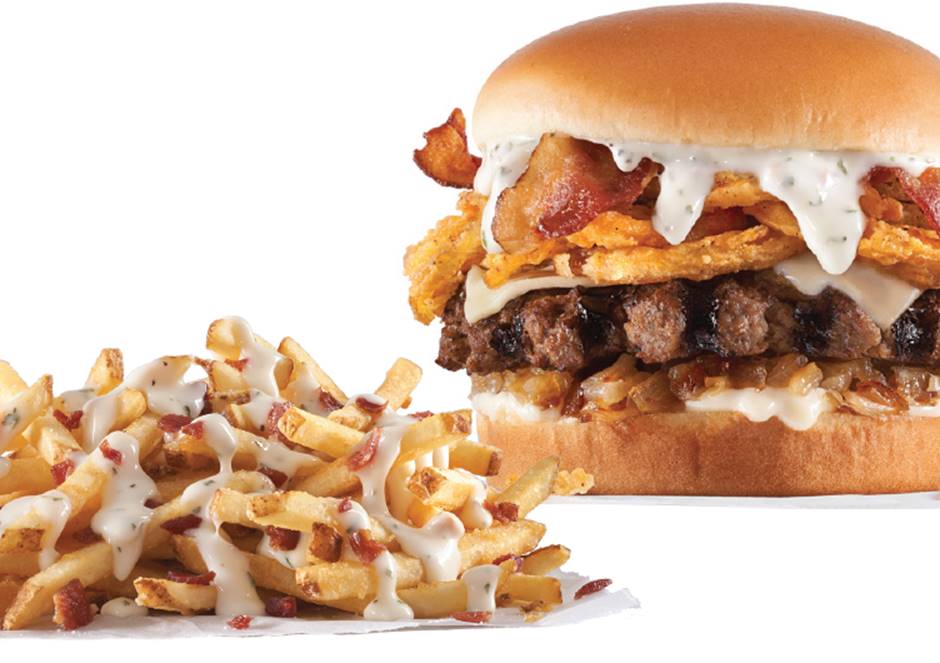Title Page
-
Rest:
- 0700
- 0702
- 0735
- 0762
- 0809
- 0810
- 0818
- 0893
- 1023
- 1097
- 1105
- 1157
- 1173
- 1334
- 1387
- 1410
- 1474
- 1519
- 1520
- 1757
- 1854
-
Date and Time of Audit
-
Daypart
TRUFFLE CHEESE SAUCE
-
Bags of frozen Cheese Sauce are placed onto a tray (no more than 4 bags), marked with a 3-day discard date and placed in the walk-refrigerator above raw products. Bags are thawed for 24-hours.
-
Microwave heat times are written onto the all-in-one microwave chart for easy reference.
-
Single & Double Batch Procedures – <br>8 oz. (6 portions) or 16 oz. (12 portions) of Cheese Sauce is weighed into an amber pan, covered with a lid and heated in the microwave following the heat times chart.
-
Single Serving Procedures – <br>Cheese Sauce is covered with a slotted lid and a #40 food disher and is held under refrigeration near the cook’s line. Single portions are heated following the heat times chart.<br>• For Burger - One heaping food disher (1 oz.) is portioned into a micro-tray boat.<br>• For Fries – Two heaping food dishers (2 oz.) is portioned into a micro-tray boat.
-
High Volume Procedures –<br>• Half a bag is poured into a 1/6 size amber pan. Pan is covered with a solid lid and labeled with a 48-hour discard time and placed in the walk-in refrigerator.<br>• The other half of the bag is poured into a 1/6 size amber pan. Pan is covered with a solid lid and placed in the microwave to heat. (Use a scraper to remove all cheese sauce from the bag)
-
Cheese Sauce is heated to a minimum temperature of 165˚F.
Cheese Sauce Temp.
-
Cheese Sauce is held in the Heatwell with 30-minute stir timer activated. The 8-hour hold time is monitored using an approved timing system.
-
Cheese Sauce is maintaining a temperature of 140˚F during the 8-hour hold time. Product is stirred every 30-minutes.
Cheese Sauce Temp.
-
Water is never added to Cheese Sauce. Cheese Sauce is discarded when it becomes discolored and lumpy or at the end of 8-hour hold time.
ONION STRINGS
-
Fryer timer buttons, fryer #2 (button #1) & Fryer #3 (button #4) are reprogrammed to a 1-minute cook time.
-
Onion Strings are cooked for 1-minute. Excess shortening is drained for 10-15 seconds.
-
Cooked Onion Strings are dumped into the salting pan. Onion Strings are NOT salted.
-
Cooked Onion Strings are held in the Prince Castle or Overshelf. 30-minute hold time is monitored using an approved timing system.
BACON BITS
-
Bacon Bits are poured into a 1/6 size covered amber pan and placed into the microwave for heating following the heat times chart.
-
Pan of heated Bacon Bits are placed at the cook’s line with a 10” plastic spoon for portioning. Pan is labeled with a 6-hour hold time.
ASSEMBLY & PACKAGING
-
Bacon Truffle Angus Burger(s) and Fries preparation and packaging is demonstrated to standard.
GUEST SERVICE & EXECUTION
-
Cashiers are scripting the Bacon Truffle Angus Burger and Bacon Truffle Fries.
-
Current schedules and deployment are reviewed to anticipate the potential increase in ADQs.
-
Cashiers are properly trained and have tasted the new Bacon Truffle Angus Burger & Fries so they can describe them to Guests.
SUPPORT MATERIAL
-
Job-aids are posted on the cook’s line and near the fry station.
-
Nutritional information has been placed near the Frontline area for employees to reference.
-
FSDS Sheets are available for reference to ensure food safety and proper storage and handling.
PERSON IN CHARGE (General Manager, Shift Leaders, Station Leaders)
-
Person in Charge knows the sales projections (ADQs) for the new products.
-
Person in Charge is demonstrating MODEL-COACH-REQUIRE as needed to enforce proper standards and procedures to deliver a HOT, HIGH QUALITY products to Every Guest, Every Time!
POP POSTING
-
The POP is posted correctly, in a timely manner and with correct pricing.
-
Mgt. Signature














